Benefits of Laser Cutting Over Plasma and Waterjet Cutting
In today’s manufacturing and fabrication world, choosing the right cutting technology can make a big difference in quality, cost, and efficiency. Three of the most common methods are laser cutting, plasma cutting, and waterjet cutting. Each has its own strengths, but laser cutting often leads the pack when you need high precision, clean edges, and fast throughput.
In this article, we’ll explore what each process is, and then dive into the key benefits of laser cutting compared to plasma and waterjet cutting, keeping things simple and easy to follow.
Understanding the Basics
Before we compare laser cutting with plasma and waterjet cutting, it’s important to understand how each process works. All three methods are used to cut materials, especially metals, but they use very different tools and technologies.
What Is Laser Cutting?
Laser cutting is a modern cutting method that uses a powerful and focused beam of light to cut through materials. The word “laser” stands for Light Amplification by Stimulated Emission of Radiation. This beam of light is extremely hot and can melt or even vaporise materials instantly. The laser beam is directed onto the material using mirrors or fibre optics, and a special lens focuses the beam into a very small, intense spot.
Laser cutting is controlled by a computer, which means it can follow complex patterns with high accuracy. It’s commonly used to cut metals like stainless steel, mild steel, aluminium, as well as non-metals like plastic, wood, and acrylic.
This method is ideal when you need clean, sharp edges and detailed cuts. Since the heat is very focused, there is minimal damage to the rest of the material, making laser cutting a very precise and efficient method.
At Kirmell Ltd, we use state-of-the-art laser cutting machines capable of cutting mild steel, stainless steel, aluminium, and more with speed and accuracy. Whether you’re creating intricate parts or large industrial components, our equipment delivers clean, sharp results every time. Read more about laser cutting and the services we offer here.
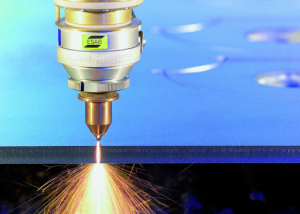
What Is Plasma Cutting?
Plasma cutting is another method used to cut metals, especially thick and electrically conductive ones like steel, stainless steel, and aluminium. In this process, a gas such as compressed air, oxygen, or nitrogen is pushed at high speed through a nozzle. At the same time, an electrical arc is created between the gas and the metal. This turns the gas into plasma a very hot and electrically charged state of matter.
The plasma reaches temperatures as high as 30,000°C (54,000°F), which is hot enough to melt metal instantly. As the plasma melts the metal, the high-speed gas blows the molten metal away, creating a clean cut through the material.
Plasma cutting is commonly used in industries like construction, shipbuilding, and automotive manufacturing because it’s fast and powerful. However, it is not as precise as laser cutting and usually leaves a rougher edge, especially on thinner materials.
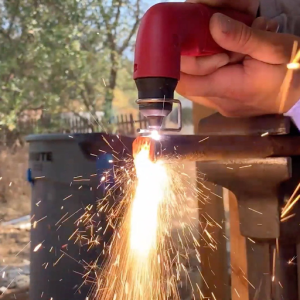
What Is Waterjet Cutting?
Waterjet cutting is a completely different method that does not use heat. Instead, it uses a high-pressure stream of water, sometimes mixed with abrasive materials like garnet or aluminium oxide, to erode and cut through the material. This stream can reach pressures up to 60,000 psi (pounds per square inch), which is powerful enough to cut through metal, stone, glass, and even ceramic tiles.
The addition of abrasives helps the waterjet cut through tougher materials by grinding them away. Since there is no heat involved, waterjet cutting is called a “cold cutting” process. This is helpful for materials that are sensitive to heat, like plastics, rubber, composites, and certain metals.
Waterjet machines are also controlled by computers, so they can follow detailed designs with good accuracy. However, waterjet cutting is usually slower than laser and plasma cutting, and it requires a system to collect and manage the used water and abrasive material.
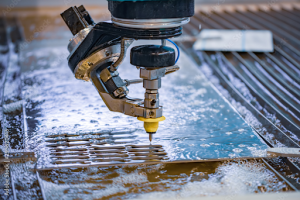
Key Benefits of Laser Cutting
Now, let’s discuss some key benefits of using laser cutting in manufacturing over the other two methods:
Superior Precision and Accuracy
- Ultra-fine beam: The laser beam can be focused to a spot as small as 0.1 mm, allowing for very tight tolerances (±0.1 mm or better).
- Consistent cuts: Computer-controlled motion ensures each part is cut exactly the same way.
Why it matters: When you need intricate shapes or parts that fit together perfectly, laser cutting outperforms plasma and waterjet. Plasma arcs are wider and harder to control precisely, and waterjet streams, while narrow, can erode at slightly varying widths depending on material and pressure fluctuations. Discover how precise laser cutting really is and why it’s important.
Clean, Smooth Edge Quality
- Minimal dross (residue) and burrs: Laser cutting usually produces clean edges that require little to no secondary finishing.
- Sharp corners and fine details: Small features, complex curves, and internal cutouts come out crisp.
Why it matters: Straight-from-machine parts save time and money on grinding, deburring, or sanding. Plasma cuts often leave a rougher edge and slag that must be cleaned up; waterjet leaves a fine taper and sometimes rough texture that may need finishing.
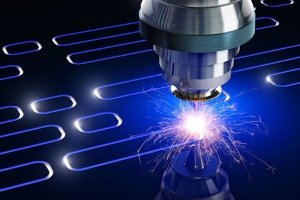
Narrower Kerf Width
- Tiny material removal: Laser kerf (cut width) can be as low as 0.1–0.3 mm, whereas plasma is around 1–2 mm, and waterjet roughly 0.7–1.2 mm.
- Better material utilisation: Less waste means you can nest more parts out of the same sheet.
Why it matters: For expensive materials (stainless steel, titanium, speciality alloys), saving even a millimetre per cut can add up to significant cost savings when producing many parts. Learn how laser cutting reduces waste and boosts efficiency.
Low Heat Affected Zone (HAZ)
- Minimal thermal distortion: The laser’s heat is concentrated and rapidly dissipates, so the surrounding material stays largely unaffected.
- Material properties preserved: There’s less risk of warping, discolouration, or change in hardness near the cut edge.
Why it matters: Parts that require tight dimensional stability or certain mechanical properties (e.g., aerospace components) will maintain their integrity better with laser than with the broader, hotter plasma arc. Although waterjet has zero HAZ, it can cause micro-cracks in some brittle materials.
High Speed and Efficiency
- Fast cutting speeds: Thin materials (up to ~5 mm steel) can be cut very quickly, sometimes up to 20 m/min or more.
- Automatic focus tracking: Advanced lasers adjust focus dynamically for consistent quality over varying thicknesses.
Why it matters: When throughput matters, such as in high-volume automotive or appliance manufacturing, laser cutting can often outpace plasma and waterjet for thin to medium thicknesses, reducing cycle times and increasing production capacity. See which industries benefit most from laser cutting.
Ease of Automation and Integration
- CNC control: Laser cutters integrate seamlessly with CAD/CAM software, allowing for automated nesting, toolpath optimisation, and production tracking.
- Minimal tooling changes: No need to swap out nozzles or tips, just adjust settings.
Why it matters: In a smart factory setting, lasers plug right into digital workflows. Plasma systems require more manual maintenance (tip replacement), and waterjet nozzles and abrasive feed systems need regular attention.
Our team at Kirmell Ltd utilises advanced software to maximise sheet utilisation, giving you more parts from the same material with less scrap.
Cost Considerations
Initial Investment vs. Operating Costs
- Laser cutters generally have a higher upfront cost than plasma units, but can be comparable to waterjets of similar capacity.
- Operating expenses (electricity, assist gas, lens/nozzle replacements) are offset by higher speeds, reduced scrap, and less secondary work.
Maintenance
- Laser systems require periodic lens and mirror cleaning, alignment checks, and coolant changes. Many modern fibre lasers have fewer moving optics, reducing downtime.
- Plasma systems need frequent consumable replacement (tips, electrodes), and waterjets need nozzle and orifice swaps, plus handling of spent abrasive.
Overall, when balancing purchase price, throughput, scrap reduction, and maintenance, laser cutting often delivers a lower cost-per-part in medium to high volume settings.
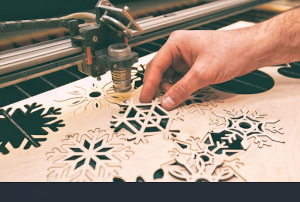
Safety and Environmental Factors
Cleaner Process
- Fumes and dust: Laser cutting of metals produces minimal particulate compared to plasma; waterjet creates slurry that must be managed.
- No hazardous gases: Plasma uses compressed air or oxygen, and lasers can use inert gases like nitrogen, producing fewer harmful byproducts.
Workplace Safety
- Enclosed systems: Many laser cutters come fully enclosed, reducing operator exposure to the beam and sparks.
- Lower noise: Laser and waterjet systems operate more quietly than plasma, notably in large shops.
Energy Efficiency
- Fibre lasers convert electrical energy to cutting power more efficiently (up to 40–45% conversion) compared to CO₂ lasers or plasma arcs.
- Less waste treatment: Narrow kerf means less material removal and lower energy per part.
When Plasma or Waterjet Might Still Win
While lasers excel in precision, speed, and automation, there are scenarios where plasma or waterjet cutting can be more suitable:
- Very thick metals (>25–30 mm): Plasma can cut very thick steel faster than lasers in many cases.
- Heat-sensitive composites or ceramics: Waterjet, being cold, avoids any thermal damage.
- Lower capital budgets: Entry-level plasma cutters have lower purchase prices for occasional, heavy-duty work.
That said, if your focus is on parts that demand fine detail, minimal finishing, and high-volume consistency, laser cutting is usually the smart choice. Learn more about which materials can be cut using waterjet cutting.
Conclusion
Laser cutting outshines plasma and waterjet in precision, edge quality, material usage, speed, and ease of automation. Although the initial investment can be higher, the long-term gains in efficiency, reduced scrap, and lower finishing costs often make lasers the most cost-effective solution for many fabrication needs. Whether you’re producing intricate components, sheet-metal parts, or custom designs, laser technology provides clean, accurate cuts with minimal thermal impact, helping you deliver top-quality results on time and within budget.
Why Choose Kirmell Ltd for Laser Cutting Services?
With over 30 years of experience in metal fabrication, Kirmell Ltd is your trusted partner for precision laser cutting. We offer services across the globe from EU to Asia and China. Our commitment to quality, customer service, and fast turnaround times has made us a go-to name for businesses across multiple industries.
Here’s what sets our laser cutting service apart:
- High-performance fibre laser machines for clean and accurate cuts on metals
- Custom cutting solutions tailored to your exact design specifications
- Material optimisation to reduce waste and improve cost-efficiency
- Fast, reliable service with a focus on quality at every stage
Whether you’re working on a one-off project or need ongoing production support, our team is ready to assist.
Get in Touch
Looking for accurate, fast, and cost-effective laser cutting? Contact Kirmell Ltd today to discuss your project or request a quote. Our team is here to help you cut smarter and deliver results that meet your highest standards.
FAQs
What is the main difference between laser, plasma, and waterjet cutting?
Which industrial cutting method is the most precise?
Can waterjet cutting damage sensitive materials?
Is plasma cutting cheaper than laser cutting?

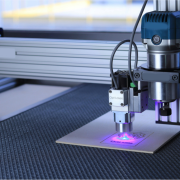
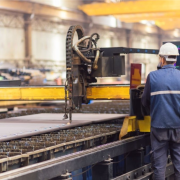
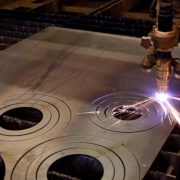
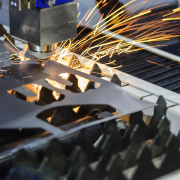
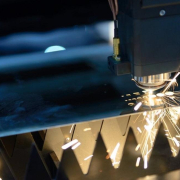
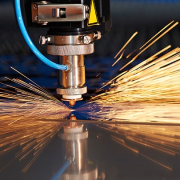
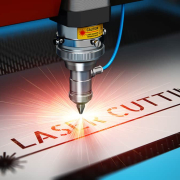
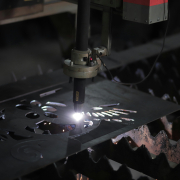


Leave a Reply
Want to join the discussion?Feel free to contribute!